The private debt market is currently experiencing impressive, sustained growth in the realm of alternative investments. While recent interest rate hikes in the US have begun to buoy persistently low bond yields, remnants of the 2008 recession have continued to support the growth of this asset class. Globally, recessionary rates have further supported this trend.
Coinciding with other developed nations, bond yields in Germany and Japan continue to hover below 1% – returning negative yields in some instances. This means that people are paying the government to hold bonds. When considering inflation, government bonds are an even less attractive investment in this low-yield environment.
US 10-year bond yields since 2009:
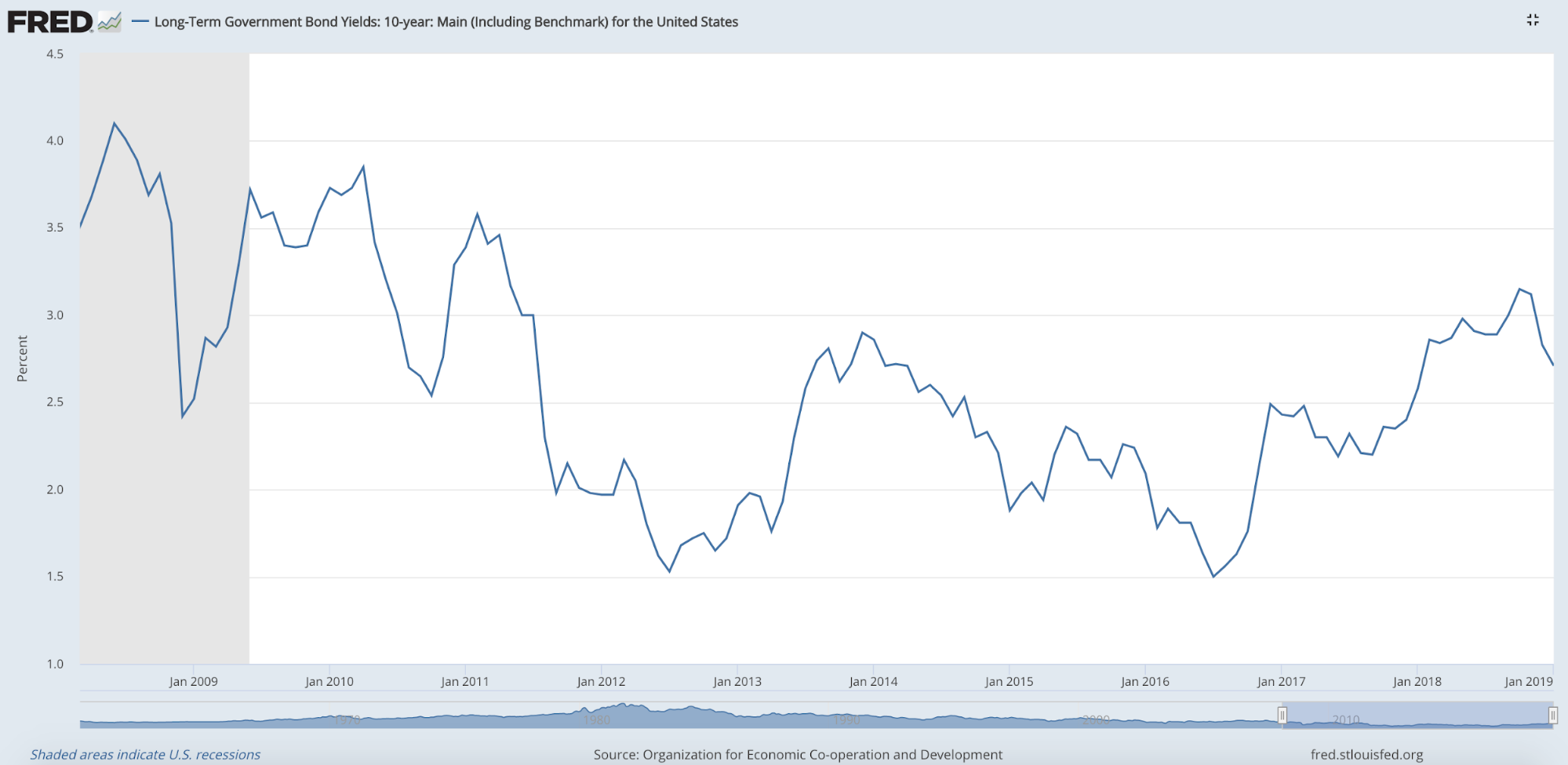
German 10-year bond yields since 2009:
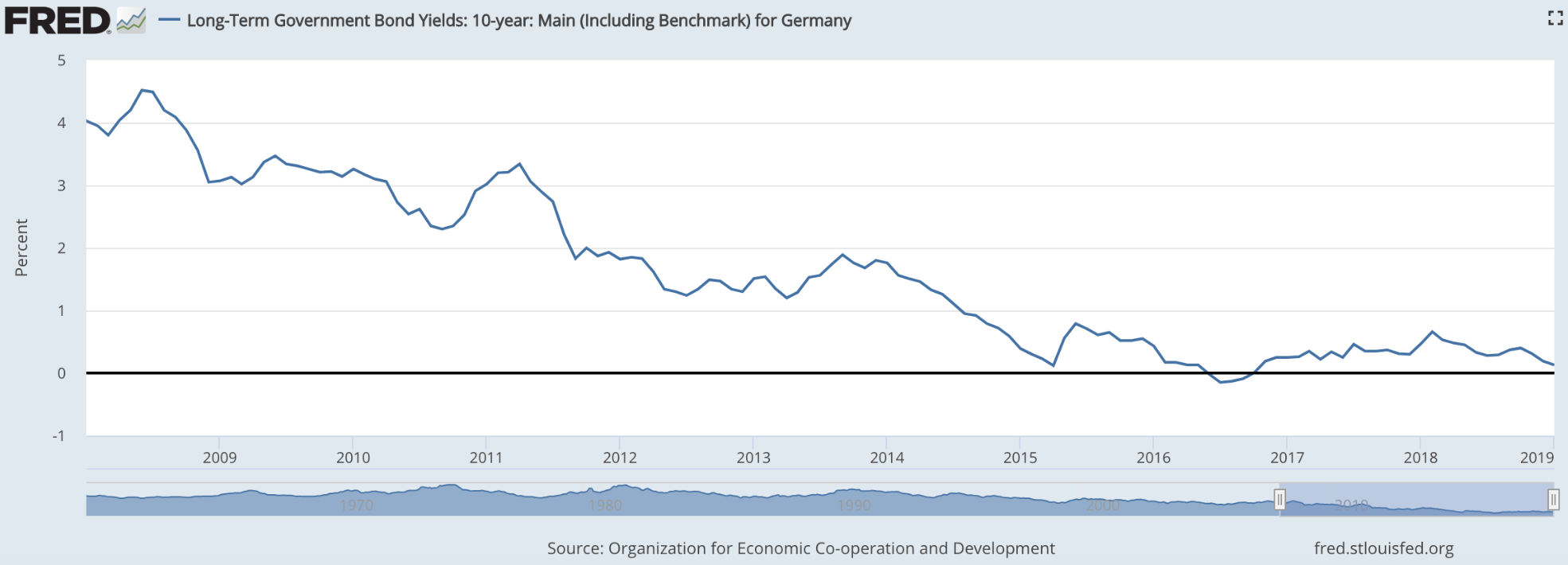
Japanese 10-year bond yields since 2009:
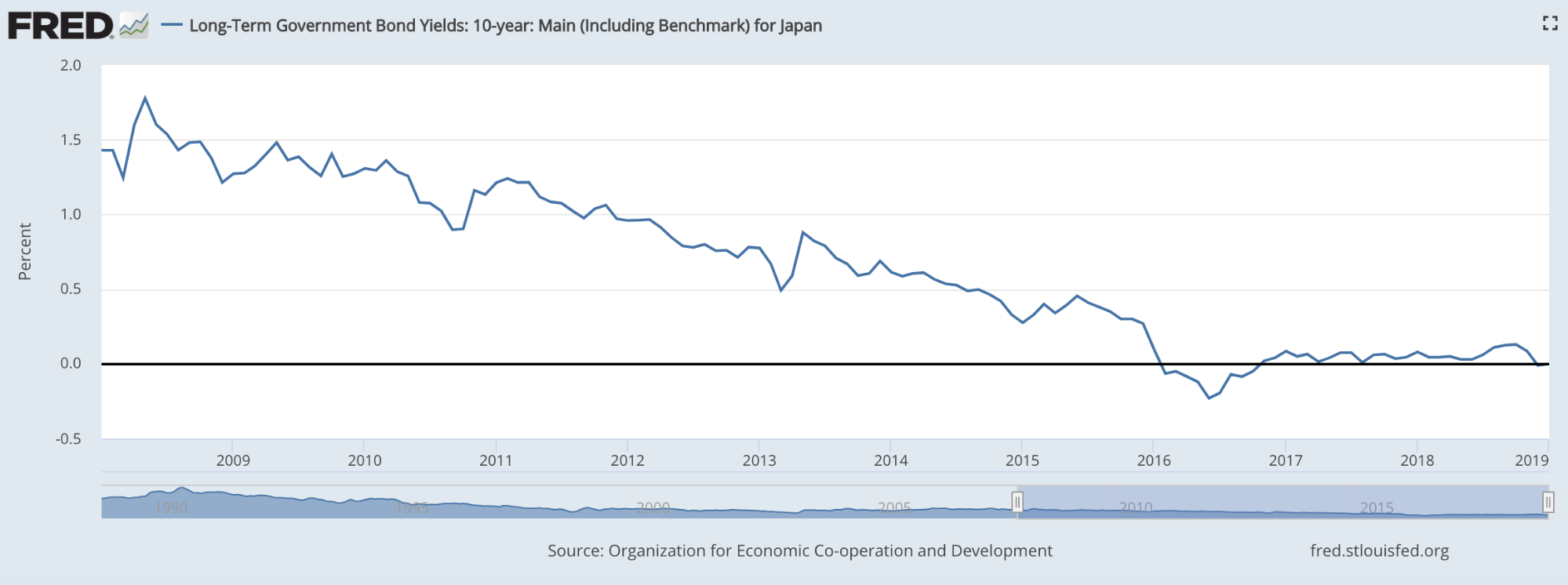
Even though current bond yields stem from 2008 recessionary pressures, their declining trend can be traced back for decades. For example, in the early 1980s, long-term US bond yields peaked at just over 15 percent. When considering this, it’s no surprise that institutional investors have collectively mobilized to seek higher-yielding asset classes.
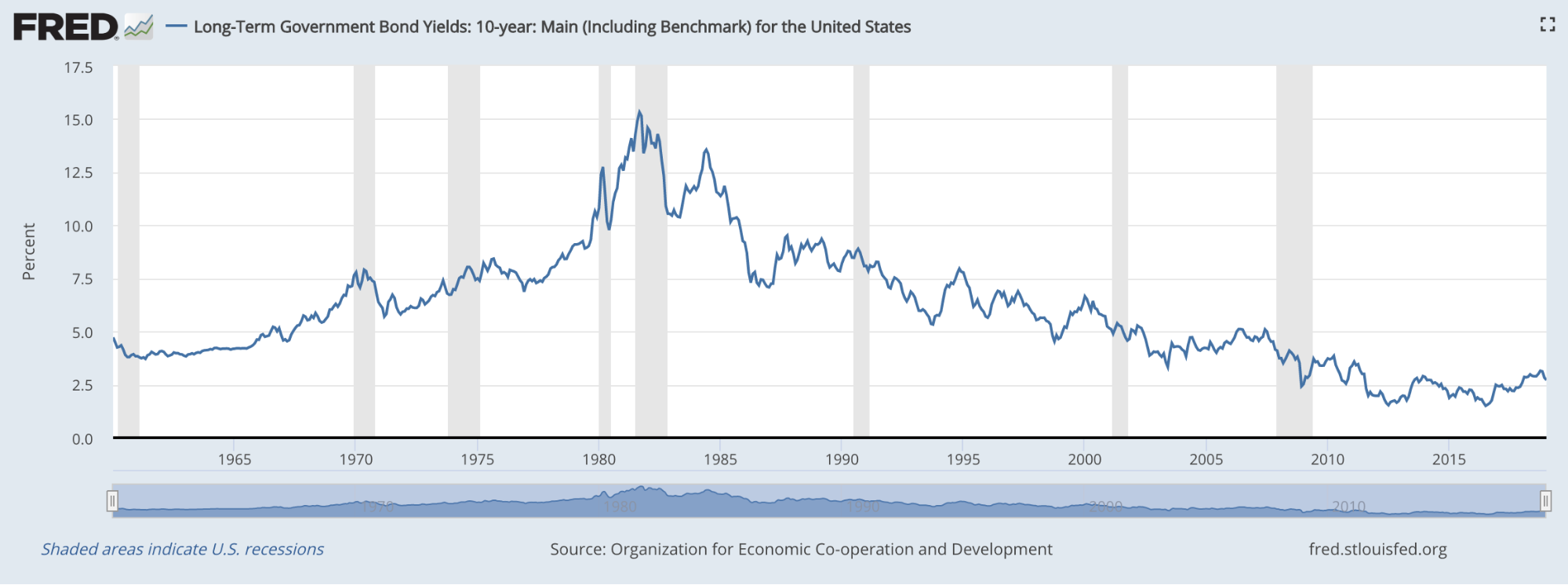
Drivers of Private Debt Growth
Private debt originates from privately negotiated loans and extended financing deployed in several market subsets. However, small and medium enterprises (SME) along with mid-market companies account for 51% of loaned funds. Many of these companies are unable to obtain credit through conventional banking channels, regardless of their creditworthiness. This trend is driven by post-recession regulations that have tightened lender capital requirements, reducing deployable capital.
As a result, an increasingly large segment of SME and mid-market firms have turned to private debt to obtain the cash they need. At the same time, institutional investors (hedge funds, pension funds, and several others) continue to seek alternatives to low-yielding government bonds. This coinciding demand has resulted in a tripling of debt investment since 2006. The trend is likely to continue as the majority of lenders intend to maintain or increase their investment in private credit markets.

Source: The Alternative Credit Council
And while investment in private debt has been further hastened by recessionary pressures, the trend shows no sign of slowing down in recovery. According to the McKinsey Global Private Market Review, funds raised to invest in private debt grew by 10% in 2017 to more than $100 billion – a peak not seen since 2008. This growth has largely occurred in Europe and in Asia, up 26% and 200% respectively.
In countries like India and China, private debt is seen as a particularly sound investment alternative to underperforming bank loans. In Asia alone, aggregate income raised via private debt fundraising has increased in every year but one since 2010.
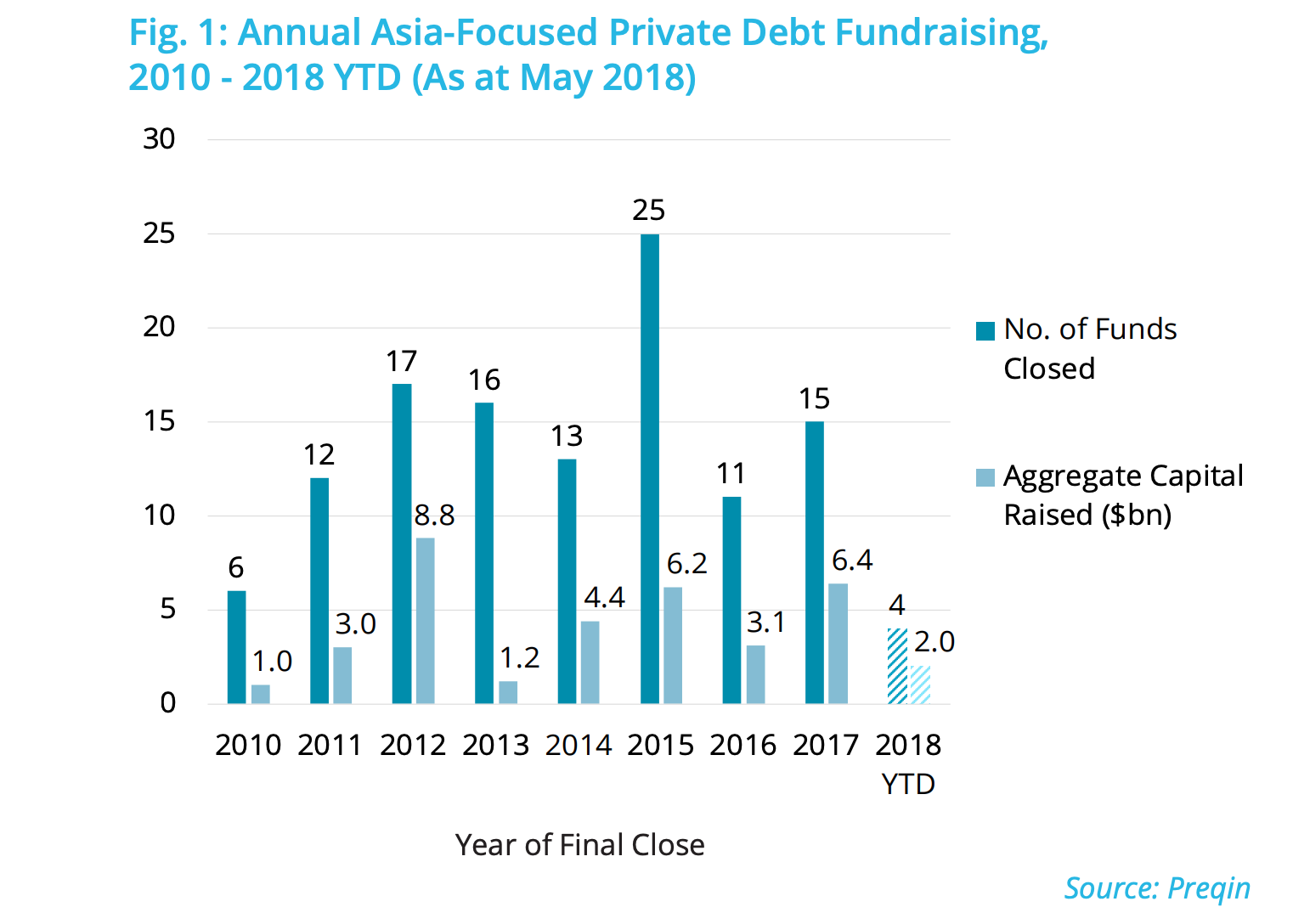
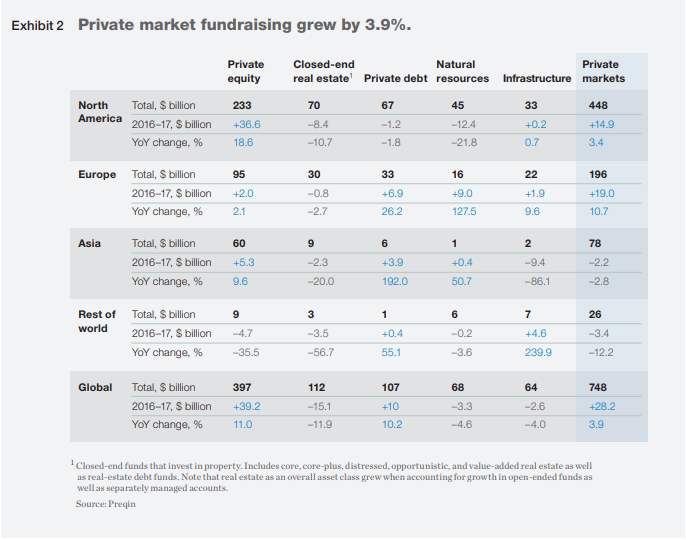
Private Debt Strategies
Research suggests that private credit is now firmly cemented as a mainstream alternative investment. The asset class is on track to reach $1 trillion of assets under management (AUM) by 2020. Within the market, lenders can employ a diverse range of strategies depending on their investment requirements.
Capital Preservation
- Mezzanine: A hybrid debt and equity financing that gives the lender the right to convert debt into an equity interest in the company should the company default on its loan.
- Direct Lending: Private loans to companies secured by real assets like property and equipment.
- Venture Debt: Private loans to start-up companies that have minimal available capital to grow their business.
- Structured Notes: A senior debt financing supported by a cash flows from two or more underlying private credit assets, offering diversification and credit enhancements.
Return Maximizing
- Distressed Debt: Private loans to companies that have defaulted on previously issued loans. These companies are usually going through restructuring or are under bankruptcy protection.
Opportunistic
- Special Situations: Investments using a combination of debt and equity to finance company spin-offs, restructurings, share purchases, and other activities.
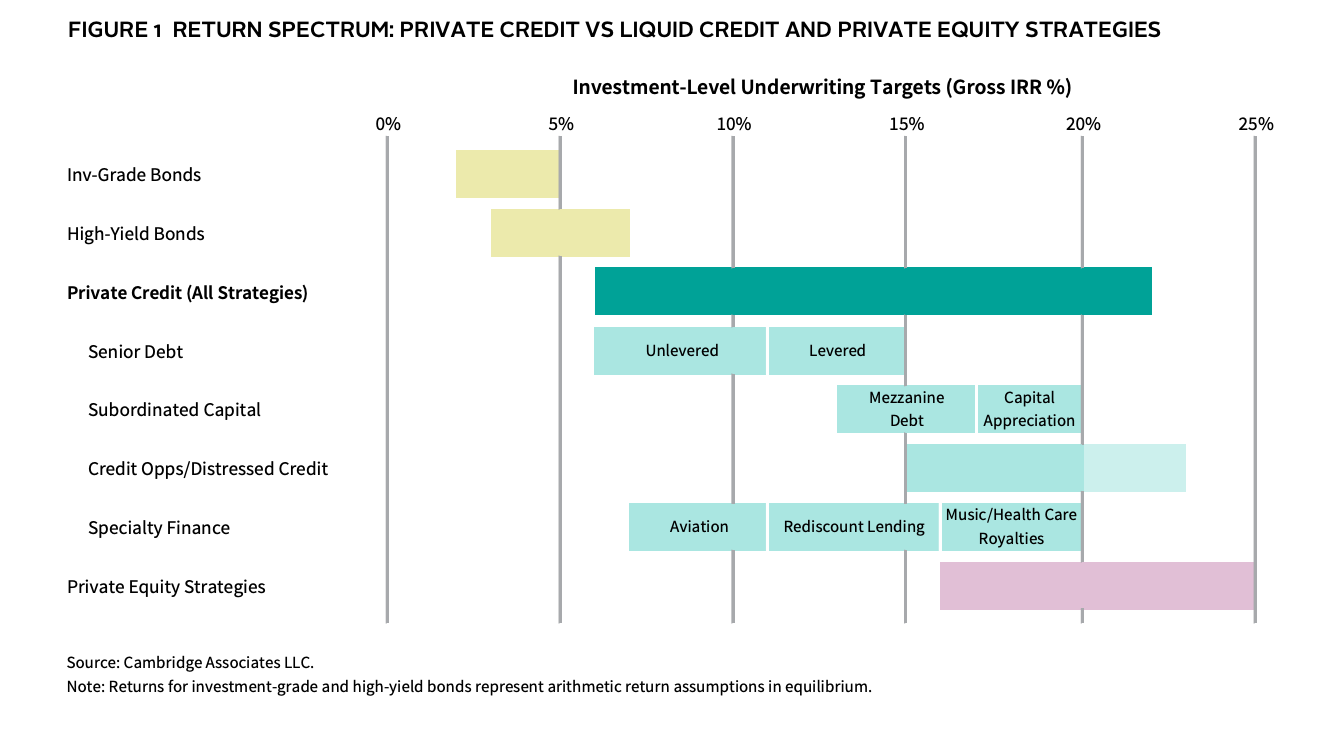
Private Debt Considerations
There are several factors prudent investors should consider when navigating the private credit market:
- Term to Maturity: Private debt investments typically have a term to maturity of 1-3 years. To realize the full yield on a private debt investment, investors have to hold the investment to maturity
- Reduced Market Liquidity: In contrast to stocks and bonds, the secondary market for private debt is largely undeveloped. Because private debt is intended to be a medium to long-term investment, it inherently caters to buy-and-hold investors.
- Less Diversification: In comparison to traditional products like mutual funds, a private debt investment can be less diversified, increasing risk. This would occur when there are fewer loans in an investment portfolio.
- Cash Drag Implications: If more cash is raised than is required by mid-market companies, private debt investments may be slower to deploy – causing cash to sit idle.
The Benefits of Private Debt
Just as investors should diversify their portfolio, more than one type of alternative investment should be considered. Despite its relative infancy, private debt offers several advantages over other asset classes:
- Collateralized By Assets: Depending on the market category in which your funds are deployed, your investment is backed by the real assets of small and mid-market companies and/or their beneficial owners.
- Low Volatility & Capital Preservation: Private debt is a structured instrument and has set repayment terms. This ensures there is lower volatility in relation to equities – you’re at a lesser risk of losing your investment.
- Low Correlation to Traditional Asset Classes: Since the private debt market operates primarily with SME and mid-market companies, correlation to traditional asset classes is minimal.
- Equity-Like Return: Private debt has been shown to provide higher returns than government bonds. These returns are more in line with those offered by equity markets (with less volatility).
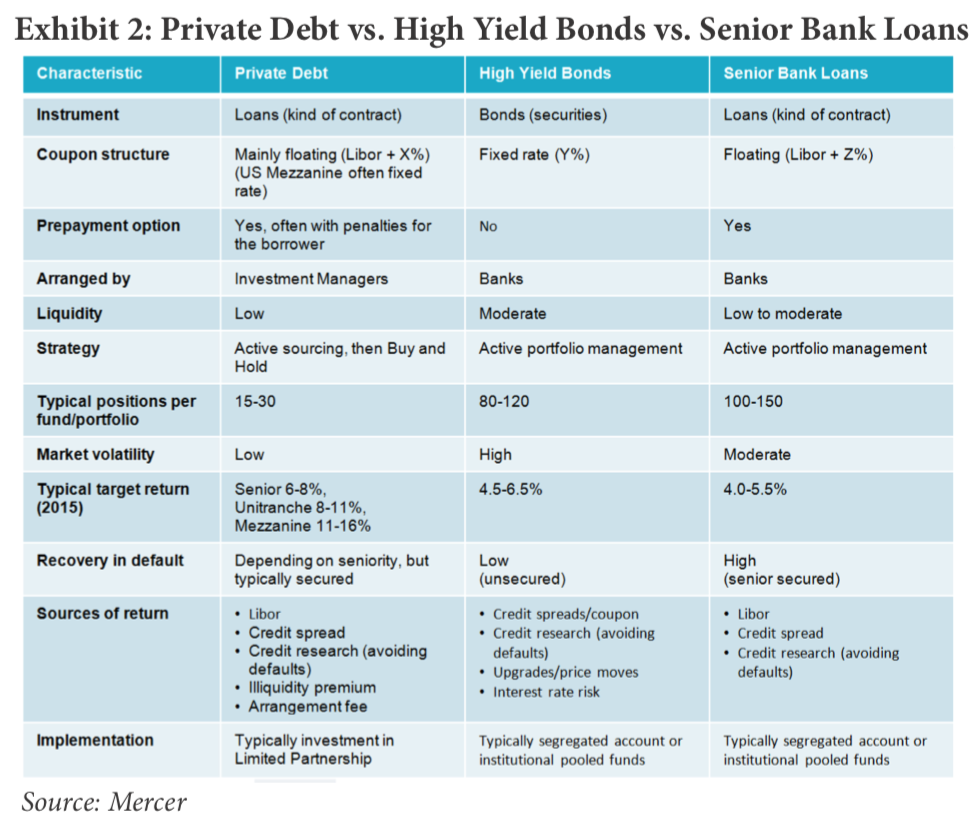
The Future of Private Debt
In the midst of a historically low-yield bond market, investors will continue their transition into higher-yielding asset classes like private debt. While recessionary pressures have begun to ease in the US, it’s unlikely that sustained rate hikes will return bond yields to historical averages in the near term.
With an increasing number of Institutional investors looking to meet their fixed income obligations, the private debt market is well-positioned for future growth. Platforms such as Percent are positioned right in the crosshairs of connecting supply with demand by leveraging technology to issue short duration, high yield structured note products. As this increased demand coincides with the funding requirements of SME and mid-market companies, the fundamentals are strong. While markets can never be predicted, several indicators suggest that private debt is becoming entrenched as an attractive alternative investment.